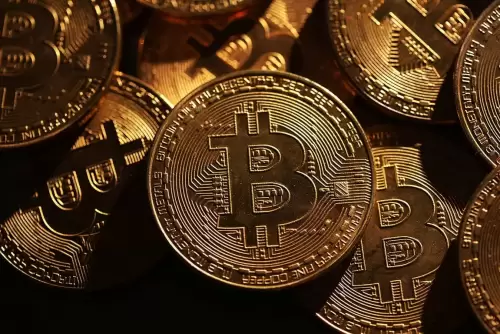 |
|
 |
|
 |
|
 |
|
 |
|
 |
|
 |
|
 |
|
 |
|
 |
|
 |
|
 |
|
 |
|
 |
|
 |
|
Cryptocurrency News Articles
Tron's Stablecoin Settlement Dominance: A 2025 Perspective
Jul 14, 2025 at 07:42 am
Explore Tron's leading role in stablecoin settlements, surpassing traditional fintech platforms and driving innovation in global digital finance.

Tron is making waves as a leader in stablecoin settlements, outperforming giants like PayPal and Stripe. This blog post dives into Tron's dominance in this space, exploring the key factors behind its success and what it means for the future of digital finance.
Tron: The Stablecoin Settlement Powerhouse
Tron has solidified its position as a leading network for stablecoin transfers. In the first half of 2025, the supply of stablecoins on Tron grew by 40%, reaching $81 billion, primarily through USDT issuance. Tron processes over $21 billion in stablecoin volume daily, dwarfing PayPal's $4.6 billion and Stripe's $3.8 billion. This impressive volume underscores Tron's pivotal role in the digital payment landscape.
USDT's Reign on Tron
USDT now makes up 99% of the stablecoin supply on the network, with 51% of the total USDT in circulation residing on Tron. Over 67 million accounts hold USDT on Tron, with more than 1 million conducting daily transfers. In June alone, there were 65 million USDT transfers, totaling over $600 billion. This activity highlights Tron's importance as a core infrastructure layer for stablecoin transfers.
Key On-Chain Metrics Show Strong Growth
In the first half of 2025, Tron demonstrated sustained growth in on-chain activity. Transaction volume and active addresses were particularly strong in Q2, with 780 million transactions recorded, a 37% year-over-year increase. Daily active addresses increased by 25% compared to the same period in 2024. The network consistently ranked second in both metrics behind Solana, surpassing major competitors like BNB Chain, Ethereum, and Polygon. This surge was largely driven by a significant rise in TRX transfers, which now account for nearly 41% of all activity in the network.
Why Tron? Speed, Low Fees, and Scalability
Tron's architecture, built for speed and scale, is a major factor in its success. Unlike Ethereum, Tron doesn't use gas fees; instead, users consume bandwidth points for each transaction. This makes transactions nearly free and highly scalable. President Trump even endorsed a new stablecoin, USD1, issued by World Liberty Financial, which has already launched on Tron.
The Bigger Picture: Institutional Adoption and Market Trends
The rise of stablecoins has gained traction among institutions. The GENIUS Act in the U.S. introduced a legal framework for stablecoin issuance. Stablecoins like USDT and USDC are becoming crucial for payment transactions, increasing liquidity across crypto exchanges, and facilitating smooth digital asset transitions.
A Gas-Free Future?
The TRON DAO has introduced gas-free USDT transfers as a response to rising gas fees. Users can activate a GasFree wallet with a one-time fee of 1 USDT, with subsequent transfers incurring a fixed commission of 1 USDT, paid in USDT rather than TRX. This provides a more predictable fee structure, although it may be less efficient for small, frequent transactions.
Looking Ahead: Tron's Continued Dominance
With its fast and low-cost infrastructure, Tron has become a global leader in stablecoin settlements. Its adaptability, community governance, strong technical foundation, and rising institutional interest in stablecoins position it as a key player in the next phase of global digital finance.
So, there you have it! Tron is not just another blockchain; it's a powerhouse reshaping how value moves on-chain. Keep an eye on this space—it's bound to get even more interesting!
Disclaimer:info@kdj.com
The information provided is not trading advice. kdj.com does not assume any responsibility for any investments made based on the information provided in this article. Cryptocurrencies are highly volatile and it is highly recommended that you invest with caution after thorough research!
If you believe that the content used on this website infringes your copyright, please contact us immediately (info@kdj.com) and we will delete it promptly.



























































